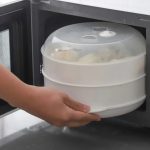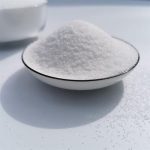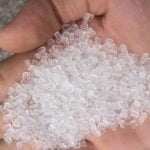Tag: Polypropylene PP Material
Polypropylene, abbreviated as PP, is a polymer formed by the polymerization of propylene. It is a white waxy material with a transparent and lightweight appearance. Its chemical formula is (C3H6)n, and its density is 0.89-0.91g/cm3. It is flammable and has a melting point of 164-170℃. It softens around 155℃ and can be used in the temperature range of -30 to 140℃. It can resist corrosion from acids, alkalis, salt solutions, and various organic solvents below 80℃, but it can decompose under high temperature and oxidation. Polypropylene is a high-performance thermoplastic synthetic resin. It is a colorless and semi-transparent lightweight general-purpose plastic with excellent chemical resistance, heat resistance, electrical insulation, high-strength mechanical properties, and good high-wear processing performance. It is widely used in the production of fiber products such as clothing and blankets, medical instruments, automobiles, bicycles, parts, conveyance pipes, chemical containers, and also in food and pharmaceutical packaging.
Physical and Chemical Properties
- Odorless, tasteless, and non-toxic. It is the lightest among commonly used resins;
- Excellent mechanical properties, including tensile strength, compressive strength, and hardness, outstanding rigidity and fatigue resistance. The active hinge made of PP can withstand more than 7×107 folding and bending without damage, and the impact strength at low temperature is poor. The tensile strength of PP is generally 21-39 MPa; bending strength is 42-56 MPa, compressive strength is 39-56 MPa, elongation at break is 200%~400%, and notch impact strength is 2.2-5 kJ/m2. The low-temperature notch impact strength is 1-2 kJ/m2. Rockwell hardness R95~105
- Good heat resistance, continuous use temperature can reach 110-120℃
- Good chemical stability, except for strong oxidants, it does not react with most chemical drugs. Solvents cannot dissolve PP at room temperature, only some halogenated compounds, aromatic hydrocarbons, and high-boiling-point fatty hydrocarbons can cause swelling. It has particularly good water resistance;
- Excellent electrical properties, good high-frequency electrical insulation parts, and good electrical insulation properties in humid environments;
- Due to the presence of many methylated tertiary carbon atoms on the main chain of PP, the hydrogen on the tertiary carbon atoms is easily attacked by oxygen, so the weather resistance and aging resistance of PP are poor, and antioxidants or ultraviolet absorbers must be added;
- Mice were orally administered with 8g/kg dose for 1-5 times, and no obvious toxic symptoms were observed. Rats inhaled the decomposition products of polypropylene heated to 210-220℃ for 30 times, 2 hours each time, and showed symptoms of eye mucosa and upper respiratory tract irritation. It is forbidden to use recycled products of polypropylene to package food, the same as polyethylene.
Is PP Material Food Grade?

The PP (polypropylene) material can be classified into food grade and non-food grade categories. Food grade PP is extensively utilized in the food industry due to its safety, non-toxicity, excellent resistance to low and high temperatures, as well as its high strength folding resistance. This material finds application in the production of specialized plastic bags for food, food plastic boxes, food straws, and other related products. Moreover, it is also safe for use in microwave ovens. However, not all PPRead More …
Is polypropylene toxic when heated ?

Polypropylene, also known as PP, is a thermoplastic resin and a high molecular polymer with good molding properties, high flexibility, and high temperature resistance. It is widely used in food packaging, milk bottles, PP plastic cups and other daily necessities as food-grade plastic, as well as in household appliances, automotive parts and other heavy industrial products. However, it is not toxic when heated. Heating above 100℃: Pure polypropylene is non-toxic At room temperature and normal pressure, polypropylene is an odorless,Read More …
Physical Modification of Polypropylene

Adding organic or inorganic additives to the PP (polypropylene) matrix during the mixing and compounding process to obtain high-performance PP composite materials. The main methods include filling modification and blending modification. Filling modification In the PP molding process, fillers such as silicates, calcium carbonate, silica, cellulose, and glass fibers are added to the polymer to improve heat resistance, reduce costs, increase rigidity, and reduce molding shrinkage of PP. However, the impact strength and elongation of PP will decrease. Glass fiber,Read More …
Polypropylene vs Polyethylene

Polypropylene (PP) and polyethylene (PE) are two of the most commonly used thermoplastic materials in the world. While they share many similarities, they also have distinct differences that make each material better suited for certain applications. Now let’s the commons and differences about polypropylene vs polyethylene Polypropylene is a versatile material that is used in a variety of industries, including automotive, packaging, and construction. It has a high melting point, which makes it resistant to heat and chemicals. It isRead More …
